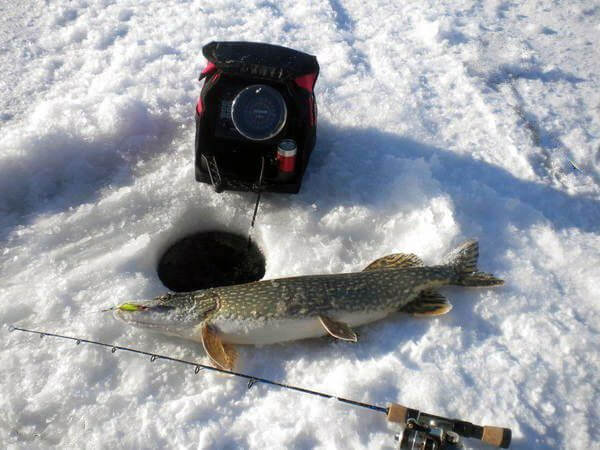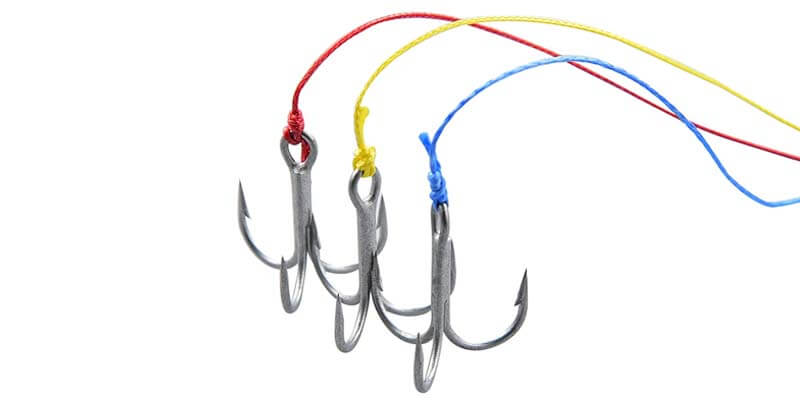For fishermen and women who happen to live in the northern United States and Canada, ponds, lakes, and some rivers freeze solid during the cold winter months. That means that you either get in some ice fishing fish finder, or you have to take the winter off. Most people who are into fishing feel compelled to get out on the ice and catch some fish. So let’s talk about how to choose ice fishing fish finder for this purpose.
Ice fishing is completely unlike fishing from the shore or your boat during the warmer months. The idea is to bore or hack a hole in the ice to access the water underneath. Then you can drop your fishing line down into the depths and hopefully catch some fish. Most northern fishermen are looking to hook a giant walleye.
In some areas, fishermen are allowed to drag small temporary shacks out onto the ice. These huts vary in construction and amenities, but some have all the comforts of home, including wood stoves to cook on and heat the shack. Some avid ice fishermen spend days or weeks out on the ice.

Whether you have a shelter or not, if you have a hole in the ice, then you’re ready to fish. How deep should you drop your line? Are there even any fish below you and your hole? Traditionalists will say that is the challenge. I say you need an ice fishing fish finder.
So what fish finder should you get to step up your ice fishing game? There are many great products available on the market today, but when choosing keep the following five considerations in mind:
Portability
Make sure the ice fishing fish finder you choose comes in a nice compact package. Some fish finders even come with a convenient carrying case or bag, which is great. Portability is the idea here. It’s not extremely likely that you’re going to drive your 6,000-pound pickup out onto the ice and right up to your ice fishing spot. A compact fish finder is much easier to pack back and forth to your fishing hole.
Lightweight

This is the second part to portability. Try to figure out the weight of your fish finder system, including any external power sources required. Picture yourself carrying the fish finder system about 100 yards each direction.
Additional weights like a motorcycle or car battery required for power are a big negative. Units that incorporate lightweight lithium ion batteries are fantastic. As with any portable item, a compact, lightweight package is a definite plus.
Beam Angle
When dealing with any sonar system, the beam angle of the transducer is an important consideration. The transducer is the piece of the sonar that shoots out the sound waves and receives the information back.
They are available in different angles, usually from about 7 degrees up to 22 degrees. Narrower beams are able to penetrate deeper water, while wider beams allow the user to see more underwater area. For most ice fishing applications, the wider the better. Since you are stuck in the same spot, it is more helpful to see a larger area beneath you.
Cold Weather Design

Standard fish finders are usually mounted on the dash of your boat where they stay relatively dry and warm. These are not designed for ice fishing, where standard conditions are wet and cold, sometimes reaching sub-zero temperatures.
Don’t listen to people who try to convince you that the fish finder on your boat will work fine for ice fishing. You are bound to damage the unit and void the warranty if you use it on the ice. To make their products more durable in ice fishing conditions, many manufacturers limit the technology on their units to 2D or flasher sonar, both of which work just fine.
Backlit Display
Since most ice fishing is done in low light or night conditions, this is an important consideration. You definitely want to select a fish finder that has a backlit display. It could be showing you all the fish in the world, but if you can’t see it, it’s useless.
Imagine using your cell phone at night with no lighting on the display. Fish finders are available with color or monochromatic displays as well. Color units are usually pricier, but both work well. Pick the one you like the best.
Conclusion
There are many ice fishing fish finders available today geared especially toward ice fishermen. Manufacturers like Lowrance, Humminbird, RayMarine, Garmin and MarCum all have products made specifically for this purpose. When choosing a fish finder for your ice fishing needs, keep in mind size, weight, beam angle, construction and display. I hope this article helps you decide which fish finder is right for you. Now get out there and fish!





Leave a Reply